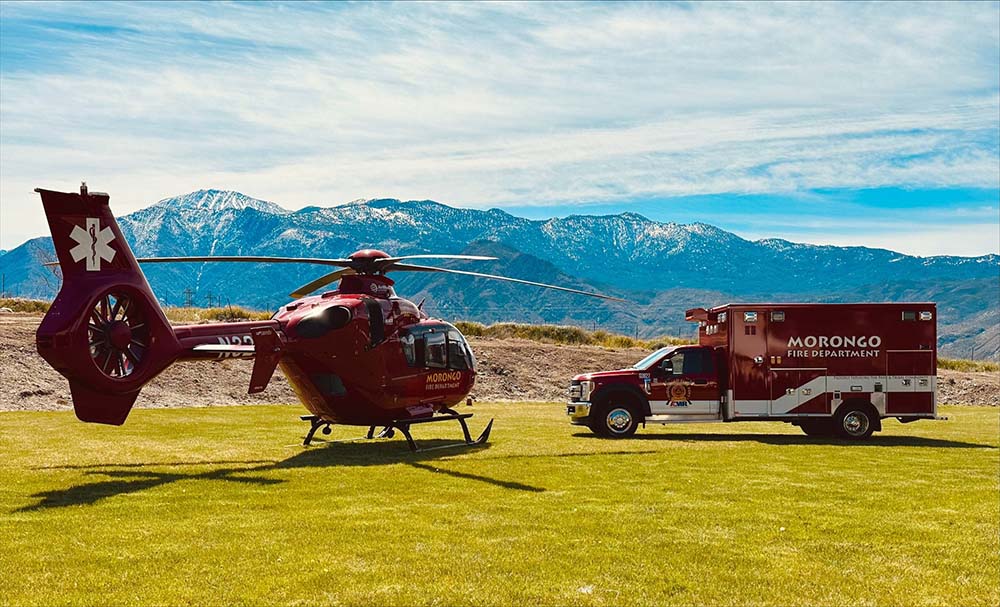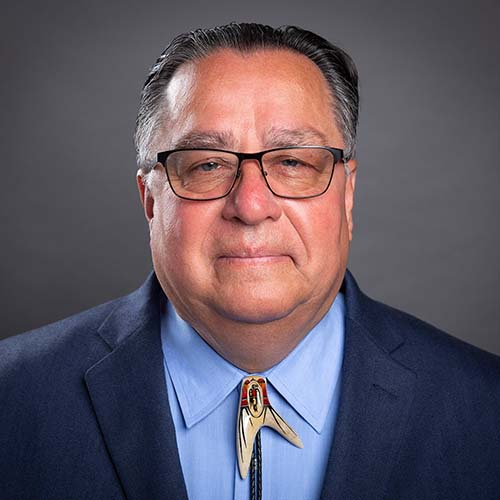
- Details
- By Global Medical Response
In March of 2023, American Medical Response (AMR)—a Global Medical Response (GMR) company—and the Morongo Band of Mission Indians embarked on a first-of-its-kind partnership between a federally recognized Native American Tribe and a private emergency medical services (EMS) company.
The goal was to improve pre-hospital healthcare for ill and injured tribal members, getting patients more quickly to higher levels of medical care—all while working within the framework of tribal self-governance and the freedoms of tribal self-determination. A little over a year later, people were taking notice.
An Award-Winning Collaboration
In 2024, the ground-breaking partnership was recognized with the California Ambulance Association (CAA) Service Excellence Award for Innovation. The CAA cited the remarkable reduction in ambulance response times—an impressive 60%—and the dramatic improvements in tribal access to care.
Morongo Chief Administrative Officer Jason Carrizosa initiated the collaboration with AMR to address the challenges of providing EMS coverage on the rural reservation. He saw a paradigm where the combined expertise of the Morongo Fire Department and Global Medical Response could transform emergency response and care in underserved areas of the reservation and the San Gorgonio Pass region of Riverside County, California.
Air and Ground Ambulance Resources
The alliance features an AMR ground ambulance (emblazoned with the Morongo emblem and in tribal colors) stationed on the reservation and staffed by Morongo Fire Department employees. The tribe also has access to an on-site REACH Air Medical Services (also a GMR company) and Morongo Fire branded air ambulance that can get to patients quickly in remote, rural locations, provide emergency clinical interventions, and get them to the level of care they need at regional hospitals. The air and ground EMS program now responds to more than 1,200 calls for service a year.
Morongo Tribal Chairman Charles Martin emphasized the lifesaving benefits of the collaboration. “The historic partnership between Morongo and AMR is saving lives on our reservation and across the San Gorgonio Pass by delivering immediate emergency medical care to the injured and ill,” said Martin. “We believe [this collaboration] can serve as a nationwide model for future partnerships between tribes and forward-thinking EMS providers like AMR.”
Experience Matters
Global Medical Response (GMR) companies like AMR, REACH and Medstar are proud to work with Native American communities to develop reliable and cost-effective emergency medical services on tribal lands, strictly adhering to tribal self-governance. Similar partnerships with tribes, in addition to Morongo, have built new EMS programs or enhanced existing models, providing skilled, timely ground and air emergency healthcare and transport services.
GMR is the nation’s largest provider of emergency medical services, prehospital care, and disaster response operations. The company draws from this experience to provide tribal leadership with models for basic life support (BLS) ambulance, advanced life support (ALS) ambulance, critical care air medical transport and hybrid staffing.
To learn more, visit globalmedicalresponse.com/tribal-emergency-services.
Help us defend tribal sovereignty.
At Native News Online, our mission is rooted in telling the stories that strengthen sovereignty and uplift Indigenous voices — not just at year’s end, but every single day.
Because of your generosity last year, we were able to keep our reporters on the ground in tribal communities, at national gatherings and in the halls of Congress — covering the issues that matter most to Indian Country: sovereignty, culture, education, health and economic opportunity.
That support sustained us through a tough year in 2025. Now, as we look to the year ahead, we need your help right now to ensure warrior journalism remains strong — reporting that defends tribal sovereignty, amplifies Native truth, and holds power accountable.
 The stakes couldn't be higher. Your support keeps Native voices heard, Native stories told and Native sovereignty defended.
The stakes couldn't be higher. Your support keeps Native voices heard, Native stories told and Native sovereignty defended.
Stand with Warrior Journalism today.
Levi Rickert (Potawatomi), Editor & Publisher
